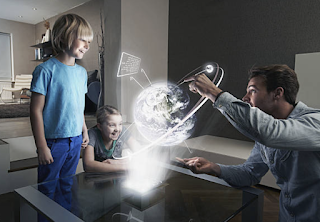Holograms are pictures that can be split in half and reveal the entire scene in each half. A photograph contains information about light scattered from a single point, whereas a hologram records information about light scattered from all the points in the scene. To understand the process better, think of holograms as a window and a street. Holograms can be created in a variety of ways, such as by cutting them in half and reassembling them.
Creating a hologram
Creating a hologram can be tricky and time-consuming. The process begins by defining a hologram plate. This plate will specify the size of the object to be holographic, and how much the images should space out. For example, 10×10 pixels would have a spacing of 1e-3, and they should be one centimeter high. During the computation process, the user can select a range of settings such as the grating order, randomize phase, and hologram centering. The hologram will be displayed on the screen several times, and will be more accurate if the hologram has a low-resolution image.
Creating a transmission hologram
A transmission hologram is a two-dimensional image that can be made using a monochromatic or multicoloured light source. The developed film for a hologram does not look like the object it represents; it usually looks like a dark, random pattern of lines. To turn the dark film into an image, light must shine through it. A monochromatic light shines through the transmission hologram, and the white light reflects off the hologram’s surface. The human eye interprets this light as a three-dimensional object.
Creating a diffraction grating
A diffraction grating in a hologram is a patterned image created by varying the angular and grating spacing of individual spots. These variations provide the desired holographic effect. Holographic diffraction gratings are often used in optical imaging, but the process is not limited to holograms. Other designs may also be created.
Using a hologram in augmented reality
Holograms are a great way to simulate any visual image in the real world, such as a human anatomy model. These holograms can be used for training purposes, and some have built-in speakers for audio experiences. Some are even interactive, such as the Microsoft HoloLens, which allows users to tap and bounce a hologram. But if you’d like to go a step further, you can try using a hologram in augmented reality.
Interacting with a hologram
Modern holograms can be interacted with using prespecified gestures. The Microsoft HoloLens, for example, allows users to tap the hologram to make it bounce. They can also be integrated with the real world using spatial anchoring techniques to determine the real-world dimensions and project the image onto the right location. However, interactivity with a hologram is still an experimental process.
